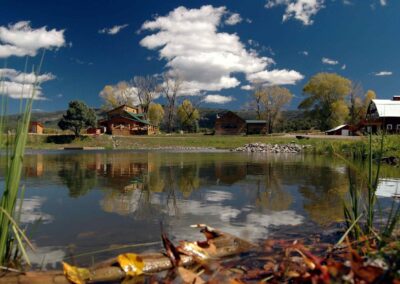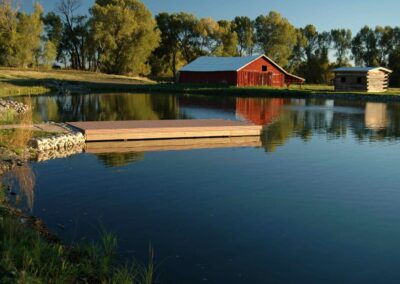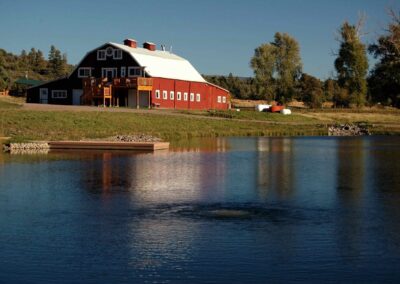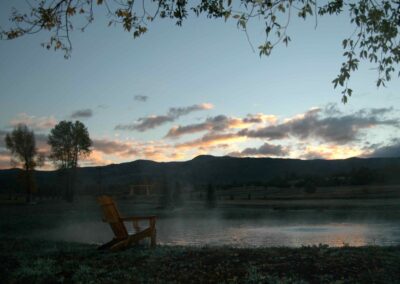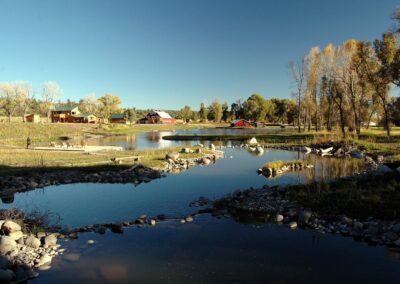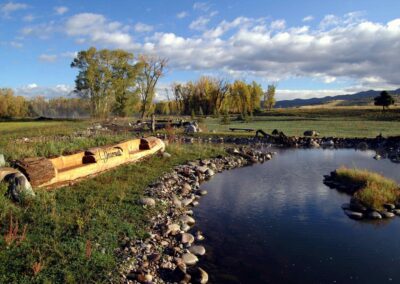Yearout Ranch
CHAMA, NEW MEXICO
The owner of this northern New Mexico ranch purchased the property to create a first-class fishing facility for his family and guests. The ranch is adjacent to the Chama River, and utilizes river to supply water to its three large lakes. Sedimentation over the years, however, had filled-in the lakes and they had become too shallow to sustain adequate populations of large trout. The Chama River is often unfishable due to high flows and turbid water. The owner asked ACI to design and build a fishable stream between two of his large lakes to facilitate water exchange between the lakes and provide fishing opportunity when the River is unfishable.
ACI was contracted to renovate the existing lakes and build two additional lakes on the property. The existing lakes were dredged to increase the depth and the interior slopes were contoured to produce optimum fish feeding areas and angler wading areas. Two smaller ponds were built at the ranch entrance for aesthetics and to provide grow-out areas where beginning anglers could easily catch fish. Each of the three lakes was stocked with different trout species, including rainbow trout, Yellowstone and Snake River cutthroat trout, brook trout, and brown trout. Two small ponds were constructed on either side of the road leading to the main residence. These lined ponds were stocked with smaller rainbow trout and provide excellent fishing opportunities for both children and beginning fly-fisherman. The jewel of the project is a newly constructed trout stream that connects the North Lake to the House Lake. The stream was created to look and perform like a natural mountain stream. The stream edges were lined with natural rock, boulders, logs, emergent vegetation and wetland sod. Fish habitat was placed throughout the stream, as well as spawning substrate at the head of the stream.
A 900-foot artificial stream was constructed between the two largest lakes at the ranch. An overflow structure on the top lake allows the owner to adjust flows in the stream up to 1,800 gpm. The stream itself consists of various riffles, runs, pools, and islands that provide excellent trout feeding and spawning habitat. Many of the pools are up to eight feet in depth. Grade control structures were constructed to allow for the proper flow over the habitat, even though there is less than 10 feet of elevation change in the entire stream.

